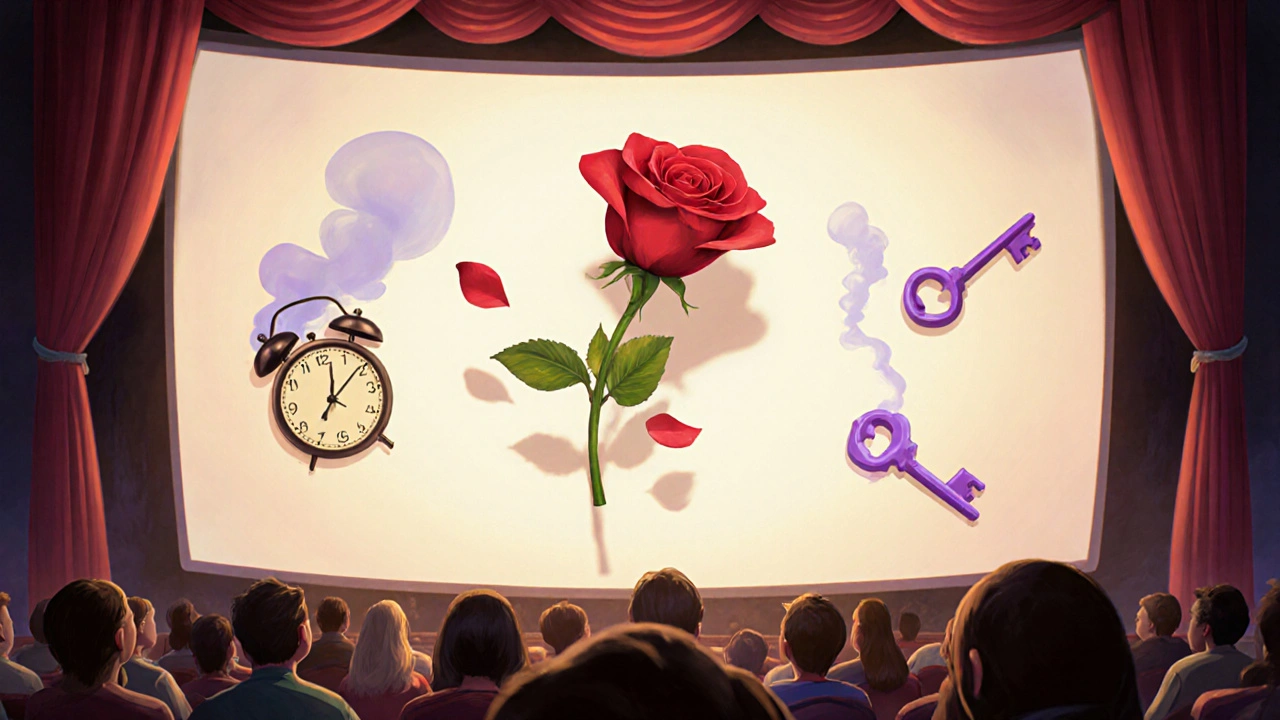Cinematic Symbols: How Visual Metaphors Shape Film Meaning
When a cinematic symbol, a visual element that carries deeper meaning beyond its literal appearance. Also known as film symbolism, it shows up on screen—like a red coat in a sea of gray, or a broken clock ticking in the background—it’s not just set dressing. It’s a silent line of dialogue. These symbols don’t shout. They whisper. And if you’re paying attention, they change how you feel about the whole movie. Think of the recurring motif of water in Her or the way shadows swallow characters in noir films. These aren’t accidents. They’re carefully chosen tools filmmakers use to say what dialogue can’t.
Behind every strong visual metaphor, a direct comparison between two unlike things using imagery to convey emotion or theme is a story that’s been thought through down to the last frame. A lone bicycle left in the snow, a door that never opens, a mirror that reflects nothing—these aren’t just pretty shots. They’re emotional anchors. In Blade Runner 2049, the orange glow isn’t just lighting—it’s the last breath of humanity in a cold, digital world. In Princess Mononoke, the forest isn’t just a setting—it’s a living, breathing character fighting back. These symbols connect to deeper ideas: isolation, loss, rebirth. And they’re why you remember a film long after the credits roll.
What makes these symbols work isn’t how fancy they are—it’s how real they feel. The best ones come from the film’s own world, not from a textbook of symbolism. They grow out of the story, the characters, the mood. That’s why you won’t find a single rulebook for decoding them. But you will find patterns. Watch closely, and you’ll notice how colors repeat, how objects reappear at key moments, how light and shadow shift with a character’s inner state. These aren’t tricks. They’re the language of cinema. And once you start seeing them, you’ll never watch a movie the same way again.
Below, you’ll find posts that dig into exactly how these symbols work—whether it’s in the quiet details of Hayao Miyazaki’s worlds, the cold precision of David Fincher’s frames, or the emotional weight behind a single tear in an actor’s eye. Each piece reveals how filmmakers use imagery to say what can’t be spoken. You’ll see how symbols tie into performance, design, and even sound. No theory without examples. Just real films, real moments, and the quiet power behind them.
Semiotics in cinema reveals how images, sounds, and colors create meaning beyond the plot. Learn how iconic, indexical, and symbolic signs shape your emotional response to films-and why this ancient theory still matters today.
View More

